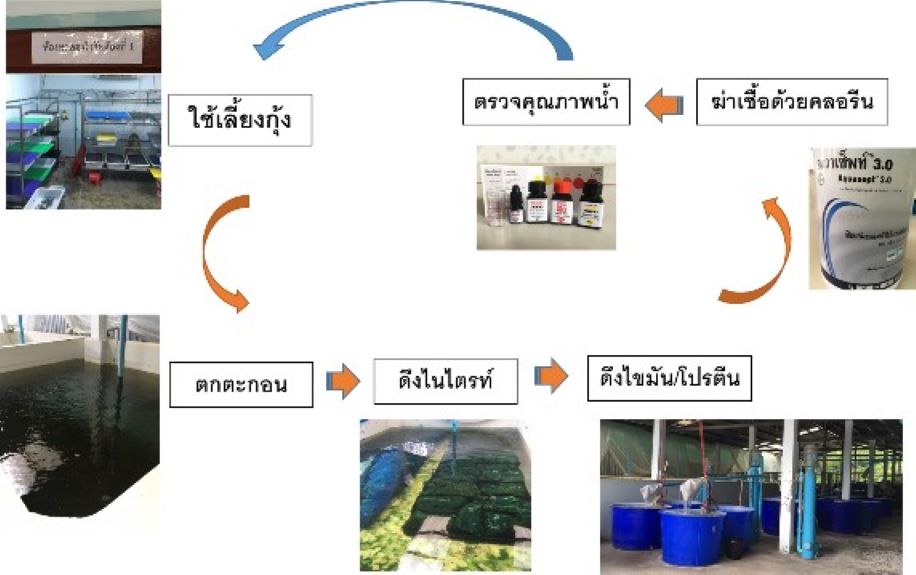The toxicity of water from shrimp culture is reduced so it can be reused, controlling the environment of water sources and preventing the release of pathogens from experiments into the environment.
Recycling Wastewater from Shrimp Pond
Research in marine shrimp farming require salt water and pathogens for experiments. To control and prevent water from experiments and the spreading of pathogens to the environment, the research group treats the salt water to reduce its toxicity and reuse it without releasing the salt water into the reserves in the university or nearby communities.
Objective :
1. To reduce the toxicity of cultured shrimp water to a reusable quality.
2. To control and prevent the release of water and pathogens from experiments into the environment.
Procedure :
To reduce the toxicity of the water from shrimp ponds, salt water is treated as follows:
1. After rearing or experiments, large sediments such as food scraps and waste from shrimps are precipitated.
2. Nitrite content is reduced to a safe level for shrimp farming using bacteria living on oyster shells.
3. Separate proteins or fats using a skimmer machine.
4. Disinfect with chlorine.
Water quality is assessed using a test kit and adjusted to a safe level for shrimp farming.
Lecturers, researchers, scientists, and research assistants engaged in research related to shrimp farming.




